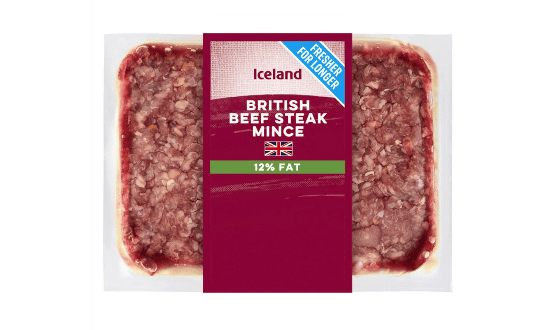Iceland Foods is switching to vacuum packaging across its full range of beef and pork mince products, which it says will help improve shelf life and combat food waste.

The new airtight packaging will replace the traditional plastic tray to increase the shelf life of beef mince ‘by almost 50%’ – insisting it increases to approximately two and a half weeks.
In a supermarket first, the alternative packaging is also being rolled out simultaneously across pork mince.
The switch reduces Iceland’s plastic footprint – it says the vacuum packaging consists of 50% less plastic than traditional plastic trays.
As a result, the supermarket will witness a reduction of approximately 35 tonnes of plastic per year.
Following a successful 12-week trial run in 50 stores across the UK earlier this year, the new packaging will be rolled out in more than 1,000 stores nationwide and online this month.
The style of packaging, which helps to make the product, will create size-efficiency, helping cut Iceland’s carbon footprint.
Zach Nowell, category buying manager for fresh meat and poultry, Iceland Foods, said: “We’re always striving to provide our customers with the best products we possibly can, and making sure that we’re listening to what is important to them.
“Our new vacuum-packaged beef mince means our customers are getting the same quality-assured beef mince they love, but with an even longer shelf life. We’re thrilled to also be leading the way as the first UK supermarket to roll out this packaging for pork mince.
“Now more than ever it’s important for families to get the best value for money when doing their weekly shopping, and our new packaging offers a wider selection of longer-lasting quality products.”
Stuart Lendrum, director of product, process and sustainability, Iceland Foods, added: “As we continue to minimise Iceland’s impact on the environment with new innovations, this sustainable switch will see a 50 per cent reduction in plastic for our beef and pork mince products, as well as a reduced number of trucks on the road needed to transport it.”
Source- Packaging News, 2024.